The Cherry G80-3494 MX Board Silent Mechanical Keyboard Review: Updating a PC Classic
by E. Fylladitakis on September 20, 2017 8:00 AM EST- Posted in
- Peripherals
- Keyboard
- Cherry MX
- Mechanical Keyboards
The Cherry G80-3494 MX Board Silent Mechanical Keyboard
A first look at the Cherry G80-3494 MX Board Silent reveals an oversized, tall keyboard with a plastic body, with the only thing visually separating it from common 80s keyboards being its black color. It takes a closer inspection by an advanced user to reveal that this is a high quality mechanical keyboard, or an experienced eye to recognize the legendary Cherry G80 design.
We received the US layout version of the Cherry G80-3494 MX Board Silent. It adheres fully to the 104 keys ANSI layout, without any extra keys or modifications. It has a 6.25× Spacebar and seven 1.25× bottom row keys. Cherry is using a classic font on the keycaps, with the letters identical to their first G80 keyboards from the early 90’s but with sharper punctuation marks. There are no extra keys, no keystroke combinations, not any kind of advanced functions.
The Cherry G80-3494 MX Board Silent is a relatively tall keyboard but not too tall, designed for maximum typing comfort. It is just tall enough to allow for comfortable typing without the user’s wrists touching the desk or the keyboard. For long typing sessions though, a proper wrist rest will most likely be a necessity to professionals.
Beneath the keyboard we find only two small tilt adjustment feet. The feet are made of clear plastic. Despite their size, they are surprisingly good at holding the large keyboard firmly in place.
Removing some of the keycaps reveals the new Cherry MX Silent switches. These switches are the new variant of the original Cherry MX linear switches that have been redesigned to limit their noise output, which can be a major problem in some applications. Last year we saw the first commercial keyboards featuring these switches when we reviewed the Corsair Strafe RGB. Our Cherry G80-3494 MX Board Silent sample features the black variant of the switch, which is a little stiffer.
Opening up the plastic body of the Cherry G80-3494 MX Board Silent is very easy, as there are hardly any screws to be found on the keyboard. Almost everything is held together with plastic locks and clips. A small screwdriver or other similar tool is more than enough to undo the clips and crack open the plastic body of the keyboard. Inside the keyboard we found a classic black PCB with the mechanical switches attached to it.
There is nothing advanced on this PCB; there are only the switches and a few passive components, with most of them being classic film resistors. A basic USB controller chip can be found on the small green PCB at the top right side of the keyboard, where the three indicator LEDs are. There is no onboard memory or advanced microcontrollers to be found here, as they would not serve any purpose and counter this keyboard’s intended design, which is based on maximizing its reliability.
As best as anyone at AnandTech can recall, this is the first mechanical keyboard that we have seen to not have a metal frame/support for the switches. Instead it relies entirely on the PCB for mechanical cohesion. It probably is not as resistant against heavy physical blows, yet it should be more than sufficiently sturdy for typical everyday use. What frustrated us is the extensive dead space inside the keyboard’s plastic body, which, in an example of just how far technology has progressed in the last couple of decades, is enough space to fit an entire modern low-power PC. Cherry obviously wanted to keep the keyboard’s frame unchanged as it has been out for decades but, on the other hand, that is a lot of space being wasted there.


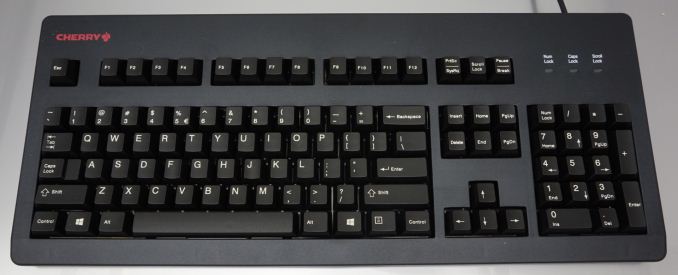
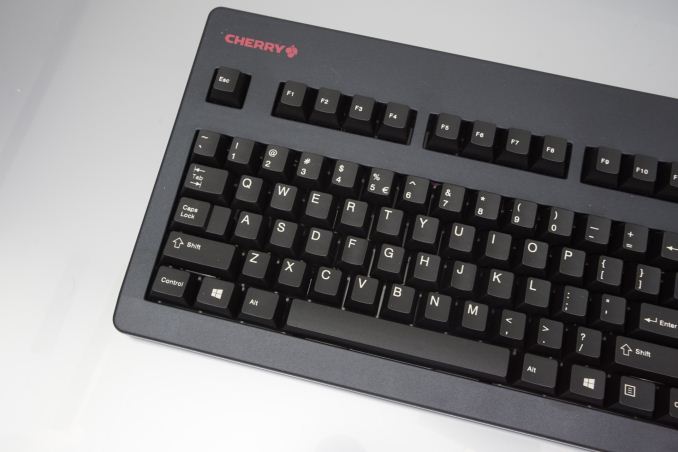
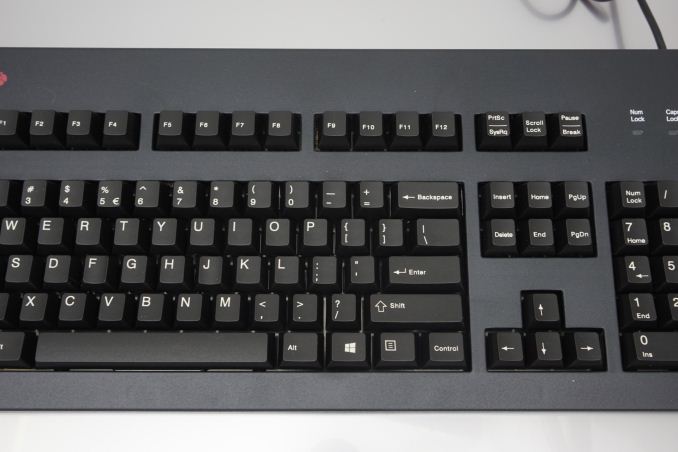
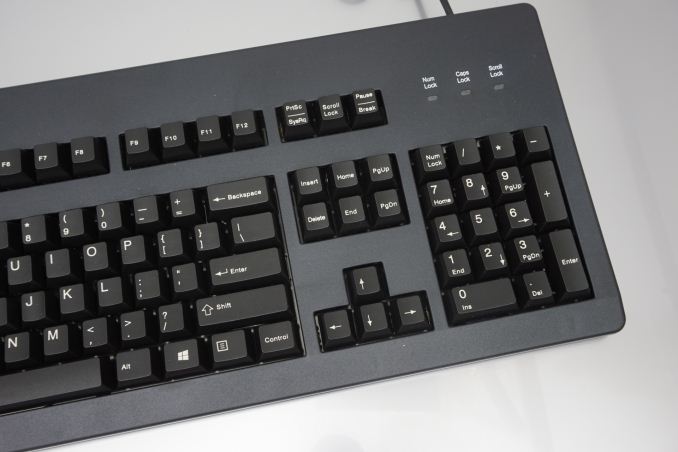
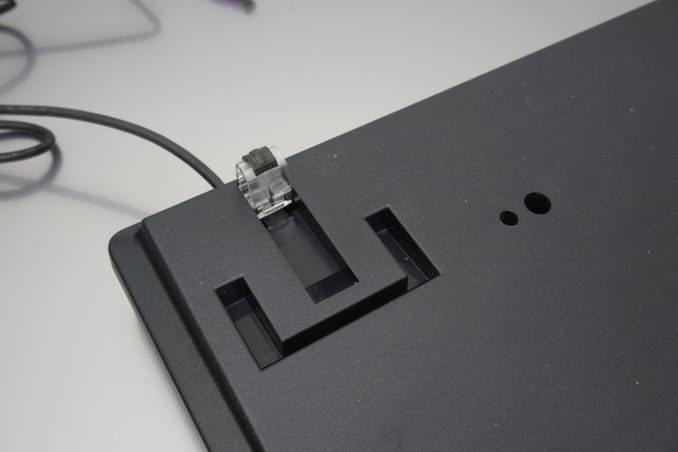

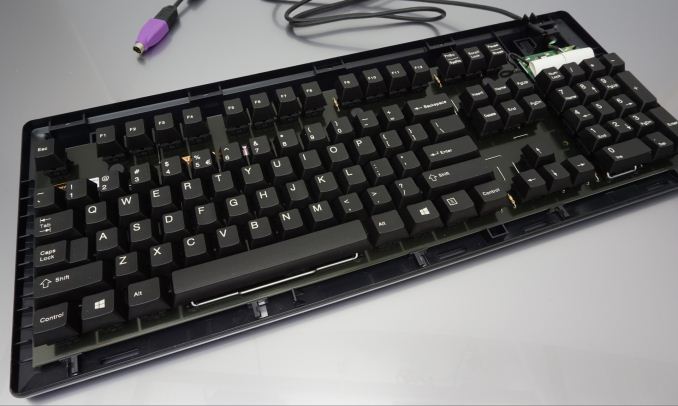








51 Comments
View All Comments
blackworx - Wednesday, September 20, 2017 - link
Also replacement key caps are available for Cherry switches, both individually and as complete sets. I'd be surprised if there was nothing suitable with nubs.Inteli - Wednesday, September 20, 2017 - link
Since Cherry uses ANSI-standard layouts, the hardest key to get might be the stepped caps lock. Full sets with a normal caps lock key are common and inexpensive, and typically have nubs on the home keys.DanNeely - Wednesday, September 20, 2017 - link
"I should, however, stress that you should not expect miracles here - the Cherry MX Black Silent switch is much quieter than its regular variant but that alone cannot make any keyboard entirely silent. The Cherry G80-3494 MX Board Silent is much quieter than typical mechanical keyboards but it will still be audible."How does it compare with normal Cherry switches with orings installed? I have a keyboard with Red switches and installing o-rings reduced its noise to something tolerable; but still not as quiet as I'd have preferred.
Findecanor - Wednesday, September 20, 2017 - link
The Cherry MX Silent switches silence the upstroke a bit also.There are also keyboards from other manufacturers with these Silent Red or Silent Black and with a more solidly built case.
Robotire - Wednesday, September 20, 2017 - link
I’d love to try a "silent" mechanical keyboard, but this is just yet another non-ergonomic keyboard with keys that are not placed accordingly to the fingers’ position. I don’t understand why keyboard makers keep releasing a couple new models a week of the same old broken keyboard layout…ayabe - Wednesday, September 20, 2017 - link
Because those types of keyboards are and will always be niche products. They've been out in various flavors for 20 years, everyone who wanted to try one already has yet sales are...terrible.It's about the money.
dave_the_nerd - Wednesday, September 20, 2017 - link
Yup. Money makes the world go 'round.Same reason you can barely find a good ergonomic trackball.
Diji1 - Wednesday, September 20, 2017 - link
I realise they're following a classic design but damn, so much bezel if that's the correct word (it probably isn't).Inteli - Wednesday, September 20, 2017 - link
I mean, if you REALLY want to try a silent switch, you could build an Ergodox, or buy an MX ergonomic keyboard, disassemble every switch and swap out the internals for the silent switch internals.bigboxes - Thursday, September 21, 2017 - link
Ergonomic keyboards suck. I suppose it varies on the individual. I like to be productive so I prefer a standard keyboard. Now, everything else is ergonomic. The keyboard tray, the chair (and it's arms), the monitor (on a arm).